For the past two days I’ve been a bed with eye seizures trying to pass out to avoid using up the medicine…
Full length audio books on a loop are good for this. Beowulf, Roland and Gilgamesh are my dream companions. In He: Gilgamesh into the Face of Time, I once did a series of footnotes on Gilgamesh along with my adaptation of some two translations and the most pleasing adaptation taken from seven sources. That last is the one I have been listening to. Myself, along with every other commentator I have read, have limited our discussion of this, Our Oldest Book, rediscovered on the very eve of our industrial extinction.
We are accustomed by our academic doctrines to look upon the ancients as either fools or mystics, to regard them with no sense of physical reality. Yet, their lives were all more physical than ours. Rather than fantastically dreaming fools or mystics composing in purest metaphor, I will here, consider the stories of Gilgamesh, Enkidu and The Distant One, that man who as a counterpart to the Hebrew Noah gained immortality and reposed at “the Source of Rivers.”
This will be done by considering fantastical details as a dim and muddled memory of a past no longer fully understood by the Poet circa 1700 B.C., as his world, just upstream from the world of Gilgamesh, underwent a fresh cataclysm. These Kassite and Arуan invasions would reorder that world, and by 1177 erase it from history into echoes of yore, only to be partially rediscovered in the modern age.
So, when the Poet says, that the heroes marched 400 miles, rested, and then completed that 1,000 mile trek in three days, and camped, a trek that he reminds us time and again takes normal men six weeks, he attributes this to their nine-foot long legs and their semi-divine vigor. This reader will ask the question, are those nine-foot long legs a metaphor for some other means of transport? The poet has addressed the normal current reality in the post-Aryan world of “swift asses” “mules” and “war horses” pulling men in chariots and he casts back to an age when some men had much more power than in his age, a counter-conceit congruent with every epic poem no matter the culture, that men of old could do things that men at the time of poetic composition could not.
Might not a look at literal descriptions of men, heroes and gods be reality-based reflections of an earlier age concerning common men, and those men seeking to regain the powers and means of a past age, and also those powers and means embodied by the gods and their peculiar servants?
From memory, I will walk through some glaring reflections in artful metaphor that might have been also echoes of an older reality.
The key figures, a conquering, raping, King Gilgamesh, and the challenging wild-man barbarian, Enkidu, fit perfectly the types of the Arуan Invader out of the steppes and his cousin, the Cro-Magnon hold over of the wild lands and forests, one the fresh oppressor of the farming people, the other a primal menace to them.
The trapper who discovers Enkidu living with the animals is a figure of civilization, trapping animals whose meat will be rendered less palatable, primarily for money gained by the sale of their pelts. Enkidu, who is revealed as a companion of ungulates and even grazes, but also as a hunter of lions and wolves, destroys the traps and frees the animals—very Tarzan like. The relationship between the wild-man with the trapper and shepherds on the margins of—but of—civilization is like that of the Amerindian warrior versus the Mountain man and pioneer of a latter age.
So, Enkidu, the “primal” throwback clearly represents the enemy of agrarian civilization as marginalized and also as a rival to the pastoral Arуan conquerors of those farming societies, very much as does Grendel in Beowulf and the Cyclopens [1] in the Odyssey. In any case “the people” are racially different from and oppressed by both figures, with Enkidu having far more in common with Gilgamesh than the people.
The weapons of the heroes are made to order on a forge [2] and are of such weight that me could not wield them, only these heroes constructed purposefully by the gods. The war kit is 600 pounds, ten times the weight of a Bronze Age war kit of the Poet’s era.
I ask science-fiction fans, how much would a suit of powered armor weigh?
Forgetting this. How much does a 50.Cal machine gun, a mini-gun, a motorcycle, a willy jeep weigh?
Could such basic industrial area weapons, assumed to be weapons due to the context of their ruin, have been muddled into a memory some thousands of years later of weapons too heavy for mortal men to use, and artificed into 200 pound axes by the poet?
This brings us to the defiling of the Cedar Forest, said to span 1,000 miles, guarded by a monster. I know a man who once felled cedars with great mechanical saws, tools too heavy for me to lift. The big knives from the forge are used to kill the monster, after the monster has been paralized by a higher power. The axes are used for despoiling what he guarded, cutting down the forest. In killing the monster rather than showing mercy and accepting his submission, the heroes are cursed. The natural hero Enkidu is cursed to death by disease, the general fate of aboriginals of his type in a civilized setting.
Might these heroes represent the barbarian invader and his savage guide, suffering the sour fruits of a victory over something they defiled in the process of conquest? [3]
Over and over again, Gilgamesh and Enkidu use force against things that they fear yet fall into their power, and then lose the use of those things due to the excess of their conquest. Their acts recall hordes of Germans or Mongols destroying water delivery systems to great cities and thence gaining the conquest of the place, but having reduced that place to a fraction of its value. Indeed, the behavior of the heroes is like that of urban rioters and shoplifters and strong arm robbers, who take by rude force an entire city like Baltimore, from its ancient builders, only to live in a food desert without having relived the need to migrate to a place where they can feed.
Heroes travel in three days a distance that would take men of the Poet’s time six weeks. In other words, the heroes journeyed a distance roughly 14 times faster than normal men by current means. How could this be possible?
Well, as a short fit man, a few inches too short to be an army Ranger, expected to cover 5-6 miles an hour with kit, I have generally logged 4-5 miles per an hour when of adventuring age. What is 14 times 4?
The answer is 56 miles per an hour, the approximate speed of an Abrahms tank or Bradley AFV, HumVee or Striker across the deserts of Iraq in 1991 and 2003.
What about Huey’s in Vietnam, taking men to places in hours when it had taken the French Foreign Legion days to march there a hundred years earlier?
I recall my brother telling me that he had 200 pounds of gear strapped-on at the air base in Vincenza, Italy when he and his mates in the 82nd Airborne were taxing down the runway in the back of a C-130 to drop into Lebanon to avenge the Marines back in the early 1980s.
Axes and swords of the age of muscle powered weapons were actually much lighter than modern people believe. [4] Four pounds is a heavy extension weapon, even for a powerful and well-trained man to wield in one hand. But, might the 200-pound axes of Gilgamesh and Enkidu, their 600 pound kit and their movement rate that would have please Rommel in 1943 or Swartzkopf in 1991have been muddle memories of a world ruined by its own war-making capacity?
I will consider additional monstrous and technological and divine aspects of the Epic in Part 2: The Hero, the Fool and the Distant One.
Notes
-1. As with Enkidu being cursed for facilitating the killing of the Forest Guardian, Odysseus will be cursed and harried by Poseidon for slaying the Cyclops. Odysseus is very much a combination of Enkidu and Gilgamesh, while Herakles is a more fitting analog to Gilgamesh in his latter questing stage.
-2. The willful going to the artificers of The Forge to have special weapons made echoes very much the arms race of the Atomic Age as well as the making of The Shield of Achilles in the Iliad, which was a divine act assisted by robotic helpers.
-3. Indeed, the public sanitation and civic organization of Modern Mexico City has still not achieved ancient Aztec levels of efficiency.
-4. Might the extreme, weight of the weapons wielded by giants like Goliath in the Bible, also be an echo of a past age of heavy weaponry, even of mechanical siege engines fallen out of service?


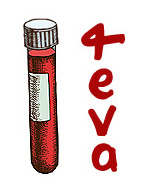
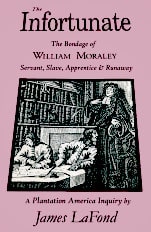

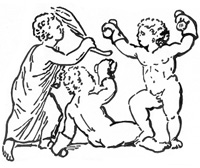
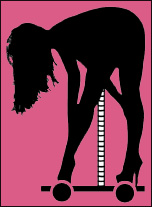

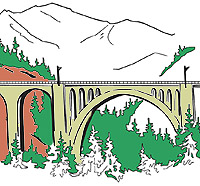
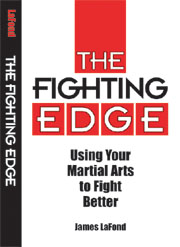

"back to an age when some men had much more power than in his age, a counter-conceit congruent with every epic poem no matter the culture"
I am always minded of the tale of Oisin, son of Fionn MacCumhail, who returns to mortal Ireland after spending (what to him was) three years in Tir na nOg with Niamh of the Golden Hair. Encountering some puny farmers struggling to move a massive stone out of their field, Oisin leans over in his saddle and easily rolls the stone, but in doing so, the girth of his saddle snaps and he falls off of his horse, which runs away. Touching mortal soil, instantly Oisin ages into an old, old man, but still a veritable giant compared to the farmers. He learns from the farmers that 300 years have passed in mortal lands during his absence, and that his friends and companions, the heroes of the Fianna, are now merely legends.